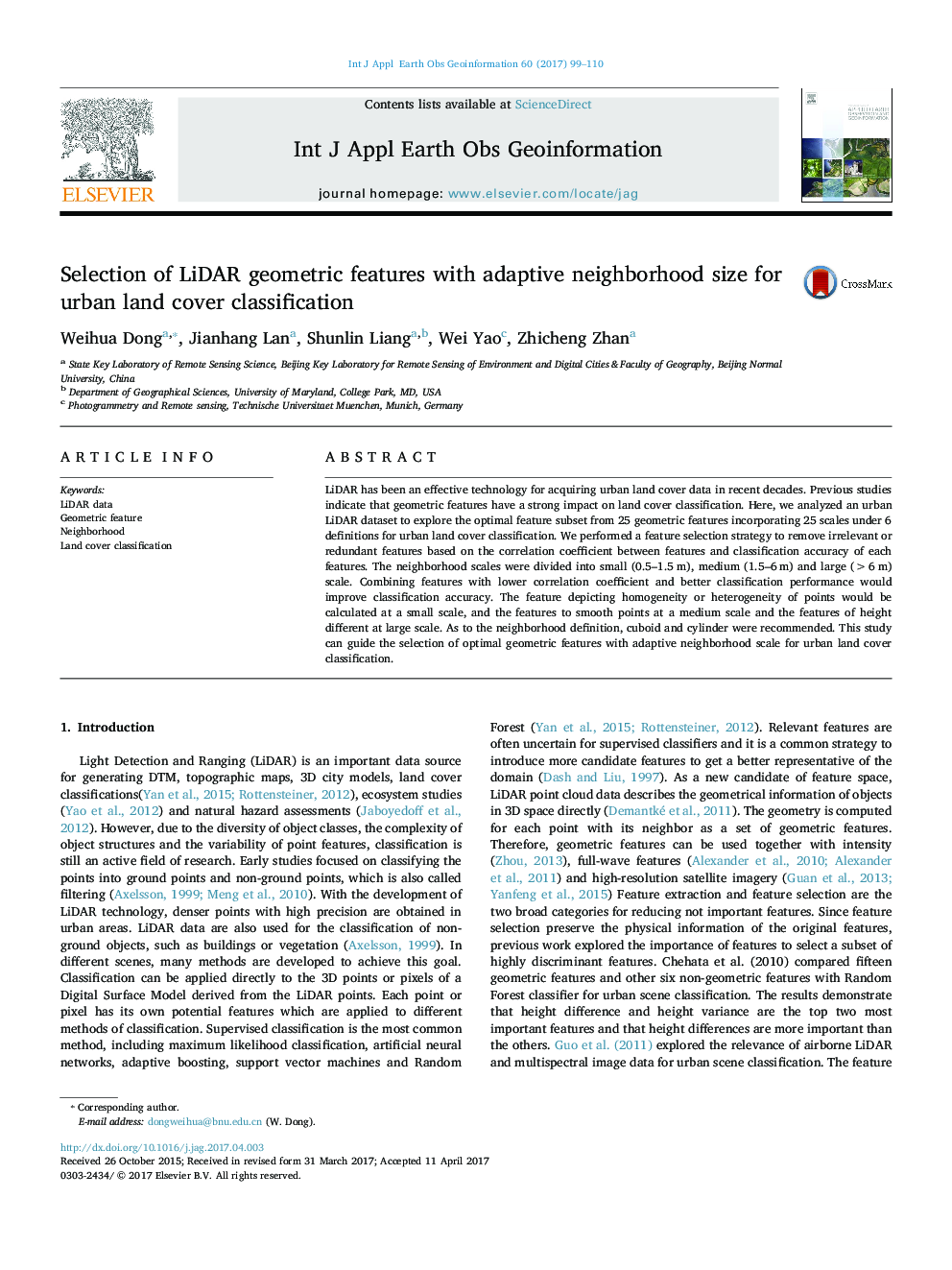| Article ID | Journal | Published Year | Pages | File Type |
|---|---|---|---|---|
| 5755517 | International Journal of Applied Earth Observation and Geoinformation | 2017 | 12 Pages |
Abstract
LiDAR has been an effective technology for acquiring urban land cover data in recent decades. Previous studies indicate that geometric features have a strong impact on land cover classification. Here, we analyzed an urban LiDAR dataset to explore the optimal feature subset from 25 geometric features incorporating 25 scales under 6 definitions for urban land cover classification. We performed a feature selection strategy to remove irrelevant or redundant features based on the correlation coefficient between features and classification accuracy of each features. The neighborhood scales were divided into small (0.5-1.5Â m), medium (1.5-6Â m) and large (>6Â m) scale. Combining features with lower correlation coefficient and better classification performance would improve classification accuracy. The feature depicting homogeneity or heterogeneity of points would be calculated at a small scale, and the features to smooth points at a medium scale and the features of height different at large scale. As to the neighborhood definition, cuboid and cylinder were recommended. This study can guide the selection of optimal geometric features with adaptive neighborhood scale for urban land cover classification.
Related Topics
Physical Sciences and Engineering
Earth and Planetary Sciences
Computers in Earth Sciences
Authors
Weihua Dong, Jianhang Lan, Shunlin Liang, Wei Yao, Zhicheng Zhan,
